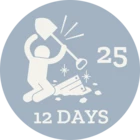I have a centerline for a river (2d) and some nearby measurement (3d-points).
I want to single create a 3d line that takes the z-values from point within a distance of 100m.
So far I tried chopping up the line using the pointOnLine-overlayer, but I can't transfer the z-values nor relevant attributes.
I tried several approaches, like deconstructing the line into points, but I feel I am missing something crucial.
Does anyone have a solution or some advice?







